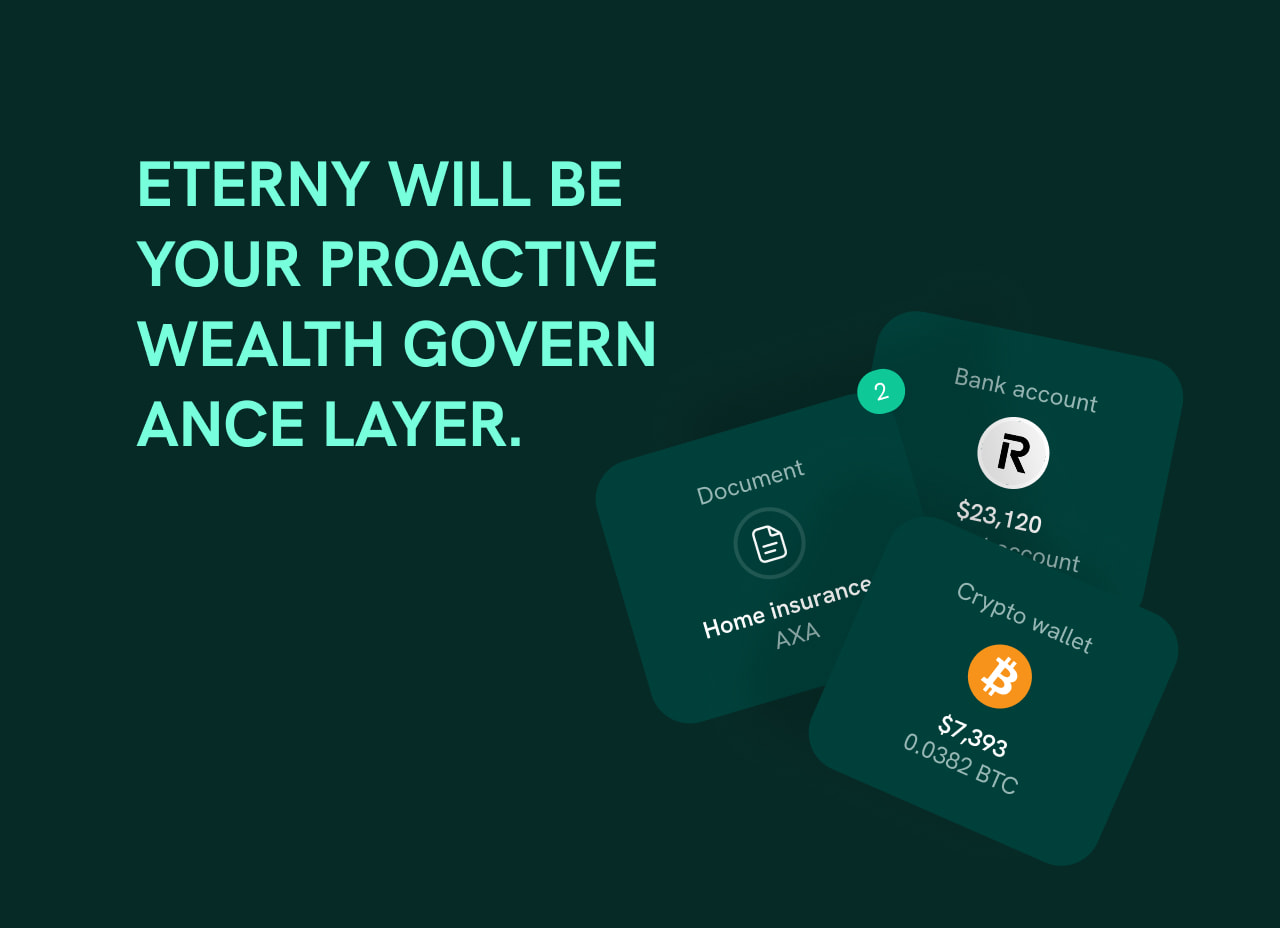Managing wealth in 2025 is no longer about “having it under control.”
It’s about keeping up with markets, regulations, accounts, currencies, and lives that move faster than any spreadsheet can.
Across Europe and the UK, an average affluent household manages assets across 9 to 15 institutions, from banks and brokers to pension funds, insurance, crypto platforms, and private equity portals. Yet, 58% admit they’re not sure where all their money actually is.
That’s not a financial problem; that’s a visibility problem, and visibility today means governance and gaps in the estate planning.
The blind spots we don’t talk about
For most people, complexity doesn’t arrive overnight. It builds slowly — a new account here, a second property there, an investment fund, a startup share, maybe a forgotten pension pot.
And with each one, new layers of risk quietly form.
- Unmonitored fees: The average EU investor pays over 1.4% of total assets annually in hidden or layered costs, often duplicated across intermediaries.
- Dormant assets: In the UK alone, the Dormant Assets Scheme manages £1.7 billion in lost financial products, pensions, accounts, and policies unclaimed by families.
- Administrative delay: Legal and financial processes still average 6–12 months for asset transfer after death, often because basic documentation is missing or scattered.
- Fragmented visibility: 70% of families have no shared overview of financial holdings — until they need it most.
From dashboards to decisions
Most wealth platforms stop at the surface: show balances, track spending, visualize trends. Useful, but reactive.
What happens when you need to understand, not just see?
What happens when your assets move faster than you can log in?
That’s where the concept of a Wealth Governance Layer begins.
It’s not another dashboard.It’s a system that continuously evaluates your entire financial structure, highlights exposures, and prompts action before the loss happens.
It’s what private family offices have quietly done for decades — but automated, intelligent, and finally available to everyone.
The governance gap
Across OECD markets, one in three wealth-holding households loses between 3–5% of annual returns due to preventable inefficiencies - missed deadlines, unclaimed credits, duplicated coverage, and outdated contracts.
In corporate finance, such a gap would trigger audits, controls, and oversight.
In personal finance, we call it “normal”.
A governance layer flips this equation.It provides oversight, pattern detection, and proactive risk signaling, just like compliance systems do for institutions. Except this time, it’s for individuals.
A smarter kind of AI
AI doesn’t replace judgment; it helps multiply awareness.
The intelligent layer doesn’t manage money for you — it manages the data around it:
- Detects inconsistencies across banks, brokers, and insurance.
- Flags policies or accounts that may soon lapse.
- Alerts when fees or exchange rates drift beyond normal thresholds.
- Monitors for “silent erosion”: small, recurring costs that collectively compound.
- And, most importantly, builds readiness — so your family can act with clarity, not confusion.
It’s not “AI for wealth.”
It’s AI for control, context, and continuity.
What this unlocks
- For users: a live map of their financial life, accurate, encrypted, effortless.
- For institutions: new engagement channels with clients who expect active, transparent, digital-first relationships.
- For the market: an entire new category between wealthtech and insurtech, where governance, not speculation, defines innovation.
In the next decade, proactive oversight will matter more than passive accumulation for individuals, families, and institutions alike.






